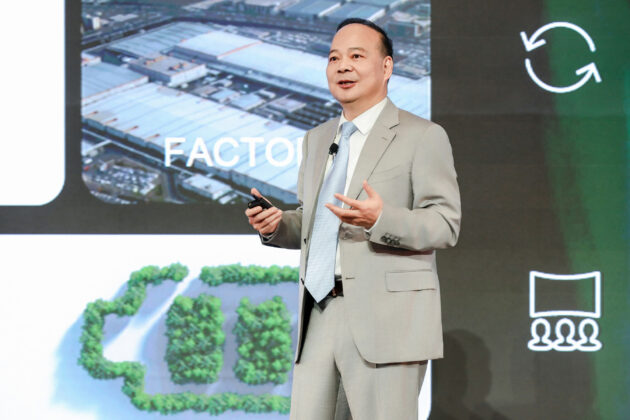
Global EV battery manufacturer calls for collaboration to solve climate change
by CM Staff

CATL shares its battery technology through its LRS (licensing, royalty, service) model and supports OEM partners with the construction and operation of battery plants.

Dr. Robin Zeng
HONG KONG — CATL, a manufacturer of batteries, called for more open innovation between businesses and countries in a bid to solve the challenge of climate change. Speaking at the One Earth Summit in Hong Kong, Dr Robin Zeng, Chairman and CEO of CATL, announced that CATL is poised to share its technology and its Zero Carbon practices to anyone committed to accelerating the transition to green energy, electric transportation, and a circular economy – including competitors.
“Now, more than ever, we must work together if we are to solve humanity’s biggest problems, such as climate change,” said Dr. Zeng.
Continuous technological advancement is the key to achieving sustainability, Dr. Zeng said. He highlighted the investment CATL has made in research and development to maintain its position as the world’s number one battery technology company. It now has more than 20,000 R&D staff worldwide and spent US$2.59bn on R&D in 2023.
Dr. Zeng outlined the significant steps CATL has taken to reduce its carbon emissions. Its four factories are reportedly already Zero Carbon, and all three facilities in the battery industry recognized by the World Economic Forum are CATL facilities. The company has also pledged to be carbon neutral in its core operations by 2025, and to ensure its supply chain is carbon neutral by 2035.
The company has also taken strides in its recycling. In 2023, it recycled over 100,000 tons of battery waste. With its 90% recovery efficiency, it says it was able to recover 13,000 tons of lithium carbonate, reducing the volume of mining needed and accelerating its contribution to the circular economy.
“I think of our sustainability efforts as a single tree, but we have an ambition to create a forest,” said Dr. Zeng. “We are willing to work with businesses, governments, investors and anyone interested in accelerating climate action. Together, to extend the Zero Carbon practice from factories to communities, cities, and more.”
In his speech, Dr. Zeng outlined three key benefits of open innovation:
- Bridges technological divide: CATL shares its battery technology through its LRS (licensing, royalty, service) model and supports OEM partners with the construction and operation of battery plants. This helps them accelerate their operations, fast-tracking green energy transition.
- Unlocks new, zero carbon scenarios: CATL is developing news ways to use battery technology to advance sustainability. For example, CATL says they are working with its network of partners on electric, unmanned mines, and battery swapping for both passenger cars and heavy-duty trucks.
- Creates sustainable ecosystems: In the near future, EVs could become distributed energy storage facilities, helping provide and regulate gigawatts of power to grids. EV owners could even benefit financially, selling power to the grid at peak times.
“We have seen countries and businesses dial back their net zero commitments at a time when we need to accelerate them,” continued Dr. Zeng. “We must unite like never before to tackle our most pressing challenges, and I believe open innovation is the key to supercharging the green energy transition.”